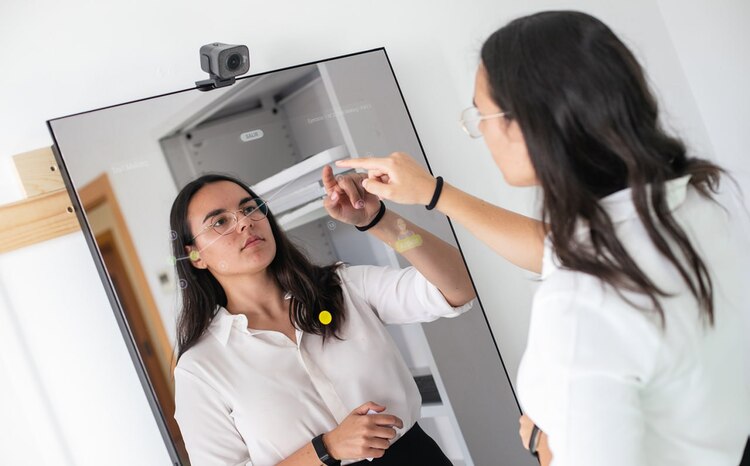Countdown to the 18 week wait
- 25 January 2008
 The 18 week RTT target was announced in the 2004 NHS Improvement Plan. It was – is – revolutionary in that it addresses the whole pathway from referral by a GP to the start of treatment in an acute setting.
The 18 week RTT target was announced in the 2004 NHS Improvement Plan. It was – is – revolutionary in that it addresses the whole pathway from referral by a GP to the start of treatment in an acute setting.
It shines a light on the so-called hidden waits – the diagnostic and follow-up outpatient stages that have historically taken weeks or months to complete and had never been measured systematically.
One major challenge for IT, recognised early on, was to do this measuring.
“Information for operational and management use is critical to the achievement of 18 Weeks,” says the NHS 18 Weeks website www.18weeks.nhs.uk. “The information requirements for ‘end-to-end’ targets are substantially more sophisticated that those required historically for ‘stage of treatment’ targets.
“The NHS needs to track its elective patients from referral to treatment linking hitherto unlinked events in the out-patient, diagnostic and treatment services of a hospital, and between providers for patients that need the services of more than one. Timely prospective and retrospective data is needed to manage patients and operational processes.”
An electronic solution is a must
While it was possible – just – to do this manually for other end-to-end targets such as the 31 and 62 day cancer targets, the information requirements in a hospital dealing with thousands of referrals a year mean an electronic solution is a must.
Despite being less than one year away from the full implementation deadline and just a few weeks away from the March 2008 milestone by which time the NHS is expected to deliver the 18 week RTT for 90 per cent of admitted patients and 95 per cent of non-admitted patients, fully-scaled up solutions are few and far between.
During 2007 the 18 Weeks team and NHS Connecting for Health pioneered the patient tracking list (PTL). In brief it is a list of patients who need to be treated by a particular time in order to achieve the target. It gives information for operational staff, for example those booking appointments, as well as performance management information by highlighting those at risk of breaching the target. It can provide the data for reporting to PCTs and the DH.
The idea was piloted in seven NHS trusts last year. Their consensus was that an RTT Patient Tracking List was necessary to deliver the 18 week target. It drives up data completeness and quality on overall RTT measurement, they found. Among the lessons they highlighted – and reported on the 18 week website – were the need for unique patient identifiers, the need always to have some manual validation of data and the difficulties of extracting data from legacy systems.
The PTL approach was endorsed by the NHS Management Board in July 2007 and it’s the basis for most development in the NHS today. While many trusts are looking at a home-grown solution, a growing number of commercial applications and partnerships between suppliers and NHS trusts are coming to fruition.
Ardentia, for example, worked with four trusts in 2007 to develop Pathway Manager.
“We have started looking at pathways rather than events,” says marketing manager David Beeson. “A typical PAS will contain all the data associated with a particular patient. Pathway Manager puts them into chronological order and analyses them for a clock start and a clock stop. It breaks it up into RTT pathways.” It’s now up and running in 10 with more on the way.
So far, Pathway Manager is making the correct linkages in over 90 per cent of patients. It is capable of predictive analysis, allowing managers to intervene early if there is a risk of a breach.
“It’s no good knowing at week 17 that a patient will breach. You need to know much earlier,” says Beeson.
Stalis Ltd has meanwhile developed Business Activity Manager. It’s designed to address the legacy system issue. “We have been working on data management projects in the NHS for over 20 years,” says sales and marketing manager John Wiltshire. “We have lots of tools for data extraction.”
Wiltshire’s expectation is that it will be easy to install. “The beauty is that it can be set up by the IT department within a trust,” he says. “As long as you understand data you can set this up simply and very quickly.”
Zuluzoft has focused on a solution called Therapy Manager tailored to meet the needs of the allied health professions. Developed with Conwy & Denbighshire NHS Trust, the software’s functionality includes tools for real time decision making and the management of caseloads and departmental resources.
Using the partnership route
University College Hospital London, meanwhile, has gone down the partnership route working with LogicaCMG and Lombardi.
Pam Crye (CRYE), ICT process lead at UCLH, says the priority for the project was to use existing data to support the 18 week RTT reporting. “We take data from our existing data repository and build an 18 week database from that which feeds into Lombardi’s Teamworks,” she explains. “We are reusing our existing architecture, modelling end-to-end pathways and using real time monitoring to identify potential problems well in advance.”
It’s early days. The operational roll out to clinical areas has just begun. But Crye is already looking to the future. “Once we are clear it will succeed we will be looking to develop front end real time tracking,” she says. “If we can show we can track, monitor and manage patients then it can extend into the clinical environment so for example clinicians could use it to track test results. That would be fairly radical.”
Enabling technologies
There is another area where IT supports the 18 week target: through enabling technologies. NHS Connecting for Health cites PACS as a good example of a technology that speeds patients’ progress through the pathway and improves reporting. Choose and Book is another: secure electronic booking provides an accurate clock start.
Other technologies such as the speech recognition and digital recording offered by SRC are also helping to cut delays improve accuracy in reporting and free up administrative time to spend elsewhere.
Using those technologies effectively is also a vital part of the equation. Waiting for correspondence to travel between different parts of the healthcare system can add up to six and half weeks to the referral-to-treatment process, according to James Fellowes of Dict8.
“It’s a significant amount of time. I would argue that’s one of the reasons for missing the 18 week target,” he says.
Dict8 uses UK-based medical secretaries with a minimum of five years and average of 11 years NHS experience. Fellowes points out that using these skills to clear backlogs and speed up correspondence can achieve a positive effect without hiring extra staff or buying equipment. “It’s an easier way of sorting out the target problem.”
Daloni Carlisle
This article first appeared in EHI’s January 2008 Special Report.





